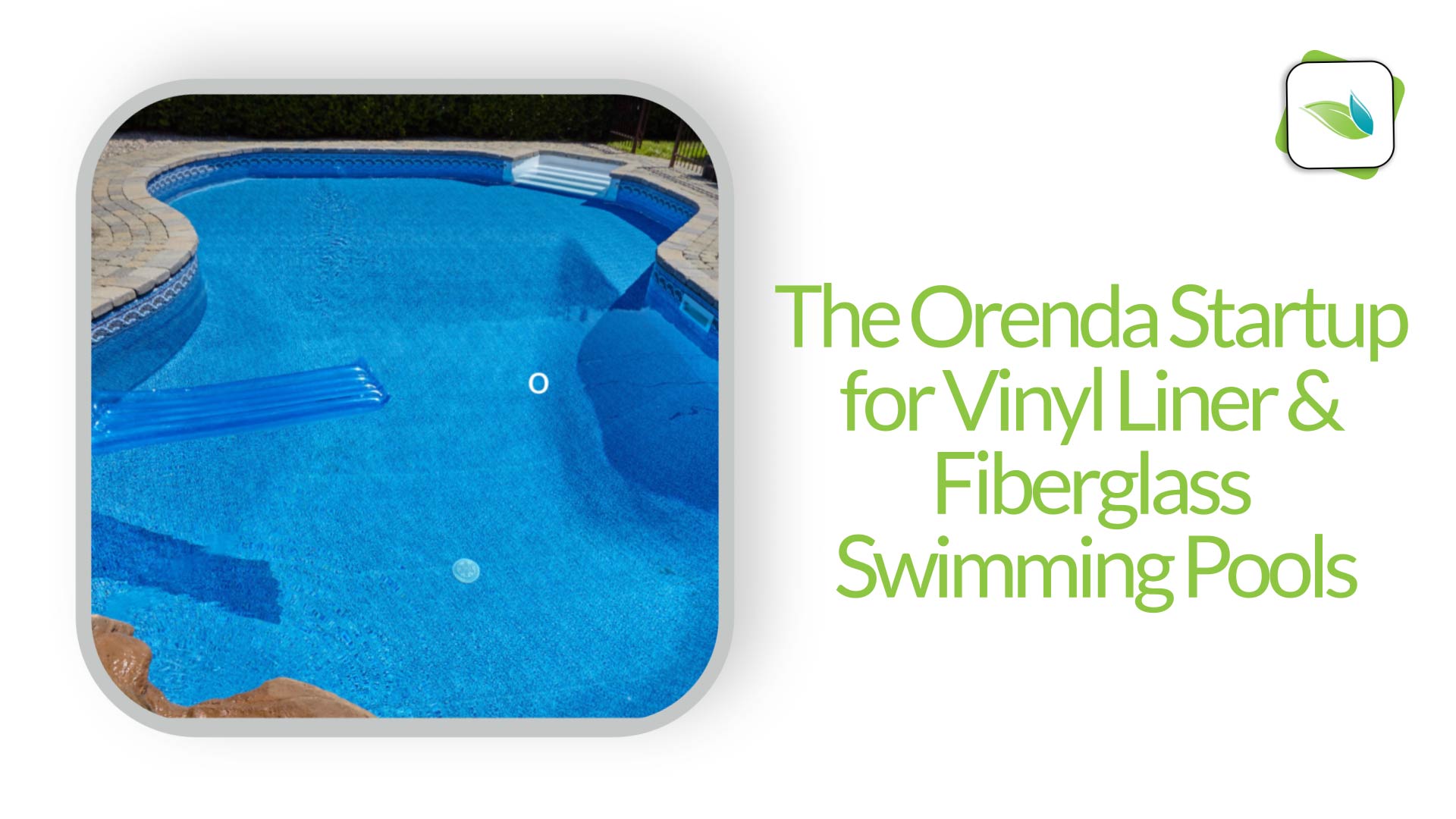Inground Vinyl Liner and Fiberglass Swimming Pool Startup

Based on 10,000 gallons (37,855 L)
Overview
Unlike the Orenda Startup™ for pools with cement-based finishes (like plaster, quartz, and pebble), balancing the LSI of the water in a vinyl liner or fiberglass pool does not need to happen while the pool is filling. LSI balance is still important and needs to be achieved, but it can be done once the pool is full and circulating.
Related: How to Implement the Orenda Program
You will need:
- Clean buckets or the Orenda Startup Barrel™
- SC-1000
- CV-600
- Calcium Chloride
- Sodium Bicarbonate
- Muriatic Acid
- Reliable test kit
- The Orenda Calculator™
Day 1
- Fill the pool and turn on the circulation/filtration system.
- Test the tap water and input results into the Orenda Calculator™ under “current” on the left.
-
- Note the LSI value at the bottom. Be sure to measure water temperature with a thermometer and input it into the app. If the water is too cold for accurate water testing (below about 60ºF), warm up your water sample before testing it.
- Adjust the right side of the Orenda Calculator™ to achieve an LSI between -0.30 and +0.30.
- Bring the necessary chemicals to the pool.
- Most startups will need calcium chloride, muriatic acid, and sodium bicarbonate to adjust LSI parameters.
- Pre-dissolve the prescribed amount of calcium chloride in clean buckets of water or the Orenda Startup Barrel™.
- Note: Do NOT blend sodium bicarbonate and calcium chloride together. Keep them separated.
- Mix half the purge dose of SC-1000 (16 fl.oz. per 10,000 gallons) with the dissolving calcium chloride. Add the other half of the purge dose directly into the pool or skimmer.
- If you are not adding calcium chloride, add the entire purge dose of SC-1000 into the pool or skimmer.
- For every quart (32 fl.oz.) of SC-1000 used, add 12 fl.oz. of muriatic acid to neutralize its pH.
- If pH of the pool is above 7.8, lower the pH below 7.8 to help keep the added chemicals in solution when added.
- A pH above 7.8 can sometimes cause a localized LSI violation, which clouds the water as calcium chloride or sodium bicarbonate is added. If either chemical clouds when you add it to water, slow down, dissolve and dilute it more, and try again. If that does not work, it's likely because the pH of the pool is too high in that moment.
- Do NOT add acid directly into the pool. Always dilute acid in water first.
- If the Orenda Calculator™ prescribes sodium bicarbonate, pre-dissolve it in a separate, clean bucket of water and slowly add it to the opposite end of the pool from where the calcium was added.
- If the water clouds, the pH may be too high. As mentioned before, lower the pH below 7.8 before adding sodium bicarbonate.
- Add the purge dose of CV-600 enzymes to the pool or skimmer (32 fl.oz. per 10,000 gallons).
- Brush vacuum the pool if necessary to remove dirt and debris.
Day 2
- Chlorinate the pool normally.
- Superchlorination ("shocking") is not necessary.
- Be aware that SC-1000 depletes chlorine levels, and it can take several days for SC-1000 to bind to metals and minerals, depending on the water temperature. The colder the water, the longer the pool will struggle to hold chlorine. But if the water temperature is below 65ºF (18.3ºC), chlorination is not as urgent because the water is cold.
- If the pool has a saltwater chlorine generator, add the necessary salt to the water to achieve the manufacturer's recommended salinity/TDS level. The Orenda Calculator™ can calculate the salt dose. Be sure the salt is completely dissolved and not sitting on the bottom of the pool. Salt can damage and discolor pool surfaces if left on the bottom. Brush thoroughly until all the salt is dissolved. Like most dry chemicals, salt takes longer to dissolve in cold water.
- If applicable, add cyanuric acid (CYA) stabilizer to the pool.
- If the pool has an inline trichlor tab feeder, the trichlor will add CYA automatically.
Additional information
Follow normal protocol once the LSI is balanced, per the vinyl liner or fiberglass manufacturer. The aim is to keep the water safe, clean, and clear, while maintaining LSI balance year-round. This can be done by containing the pH, maintaining less than 50 ppm CYA, and addressing the oxidant demand. To learn more, take Orenda Academy™ and obey the Four Pillars of proactive pool care.
Learn more about vinyl liner pools here.
Learn more about fiberglass pools here.
More Questions?
866-763-4269
